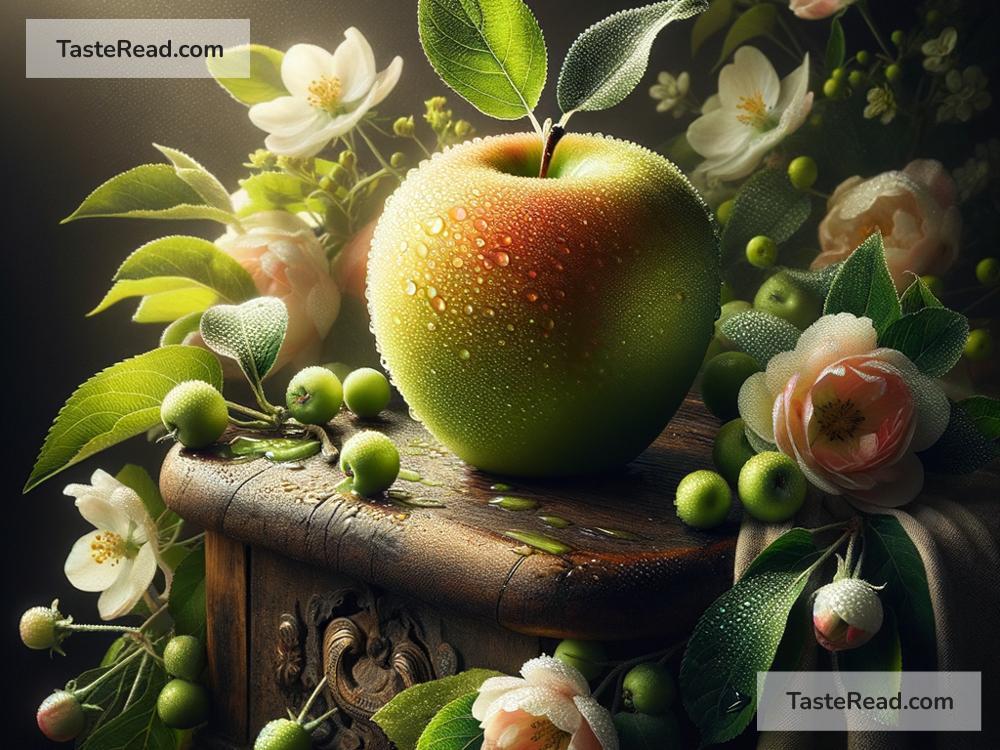Hidden Facts About the Forbidden Fruit: Apple
For thousands of years, stories, myths, and legends have featured the humble apple as a symbol of temptation, knowledge, and even destiny. From ancient texts to modern tales, this fruit has captured our imagination in ways we might not fully realize. But why is the apple so special? Why is it called the “forbidden fruit”? And are there hidden truths about this everyday fruit that we don’t know? Let’s dive into the fascinating history and mysteries of the apple.
Did the Apple Really Cause Humanity’s Fall?
The story of the “forbidden fruit” comes from the Bible, specifically the book of Genesis. In the Garden of Eden, Adam and Eve were forbidden to eat fruit from the Tree of Knowledge of Good and Evil. Eve was tempted by a serpent, disobeyed God’s command, and ate the fruit, leading humanity to sin and mortality.
But here’s a surprising fact: the Bible never actually says the forbidden fruit was an apple. In fact, the exact type of fruit is never specified. It could have been a fig, grape, pomegranate, or even a fruit that doesn’t exist today. So how did the apple get tied to this story?
The answer lies in translation and art. In Latin, the word “malus” means both “apple” and “evil.” This linguistic connection may have led medieval artists and writers to depict the forbidden fruit as an apple. Over time, the imagery stuck, and the apple became forever linked to the story of temptation and the fall of man.
Apples and Ancient Cultures
Even before the Bible popularized the concept of the forbidden fruit, apples had a special place in ancient cultures. In Greek mythology, apples were associated with love, beauty, and immortality. For instance, the “golden apple” played a key role in the story of the Trojan War. Eris, the goddess of discord, tossed a golden apple marked “For the fairest” among the gods, sparking a rivalry that ultimately led to the famous war.
In Norse mythology, apples symbolize eternal youth. The goddess Idunn guarded magical apples that kept the gods youthful and strong. Without her, even gods like Thor would age and weaken.
These stories show that apples were viewed as more than just food; they were symbols of power, beauty, and life itself.
The Science Behind the Apple’s Appeal
Aside from its rich symbolic history, apples have scientific qualities that make them special. The apple is the result of thousands of years of cultivation and crossbreeding. Apples originated in Central Asia, specifically Kazakhstan, where wild apple trees still grow. Over time, they spread to Europe and were refined by farmers for their sweetness, texture, and shelf life.
The apple is unique because of its diversity. There are over 7,500 varieties of apples worldwide, each with its own flavor, size, and color. From the tart Granny Smith to the sweet Honeycrisp, apples offer something for everyone. Behind their simplicity lies incredible genetic complexity, making apples one of the most versatile fruits.
But apples are not just tasty—they’re healthy too. Packed with vitamins, fiber, and antioxidants, apples are low in calories and high in nutrients. The saying “An apple a day keeps the doctor away” might not be entirely true, but apples do contribute to better digestion, improved heart health, and even a reduced risk of certain illnesses.
Fun Hidden Facts About Apples
-
The Apple in Space: Apples were one of the first fruits to travel into space. In 1971, astronaut John Young took an apple aboard the Apollo 14 mission as part of his food supplies.
-
World Records: The heaviest apple ever recorded weighed 4.1 pounds (1.9 kilograms)! It was grown in Japan in 2005.
-
Apples Float: Ever wonder why apples always stay afloat in water? It’s because they’re made up of 25% air. This is why apple bobbing is such a fun activity during fall festivals.
-
Ancient Apple Trees: The oldest apple tree in the United States was planted in 1625. Remarkably, it survived for hundreds of years and was still bearing fruit in the 20th century!
Why the Apple Endures
The apple isn’t just a fruit—it’s a cultural icon. Its association with temptation, knowledge, youth, and immortality spans centuries and civilizations. One could argue that its simplicity is what makes it so powerful. While other fruits may be exotic or rare, the apple is universal, humble, and accessible. Its everyday presence reminds us that sometimes the simplest things carry the deepest meanings.
In today’s world, apples remain an important part of our lives—not just in cuisine but also in art, literature, and symbolism. Think about the famous Apple logo on your favorite gadgets, inspired by the story of Isaac Newton discovering gravity under an apple tree. Or Snow White’s poisoned apple, which adds an element of danger to this household fruit.
A Fruit Full of Secrets
The apple may seem ordinary, but it hides rich layers of history, science, and symbolism. From its mysterious connection to the Garden of Eden to its place in mythology and modern-day culture, the apple proves that ordinary things can hold extraordinary stories.
So the next time you bite into an apple, remember the journey this fruit has taken across time and geography, carrying with it tales of temptation, power, and even wisdom. Who knew such a simple fruit could be so fascinating?


